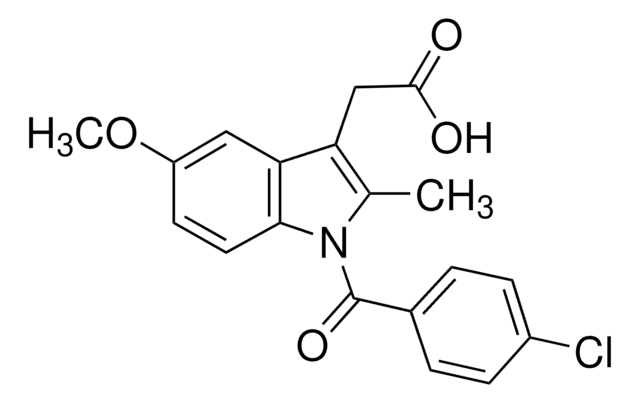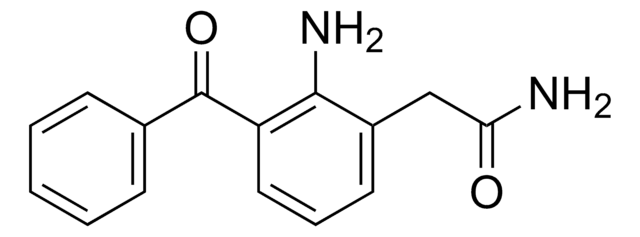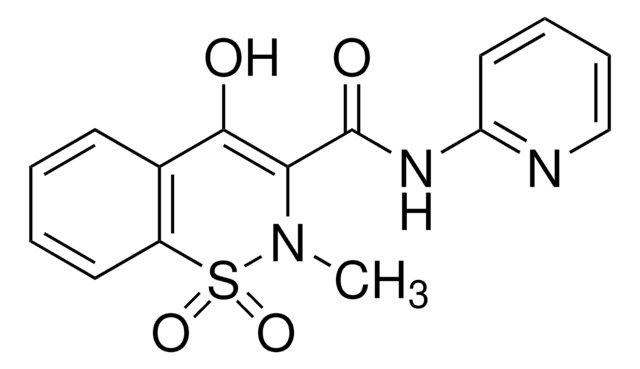Kluczowe dokumenty
SML0289
Bromfenac sodium
≥98% (HPLC)
Synonim(y):
2-Amino-3-(4-bromobenzoyl)benzeneacetic acid sodium salt
About This Item
Polecane produkty
Próba
≥98% (HPLC)
Formularz
powder
warunki przechowywania
desiccated
kolor
faintly yellow to dark yellow
rozpuszczalność
H2O: ≥5 mg/mL
temp. przechowywania
2-8°C
ciąg SMILES
[Na+].Nc1c(CC([O-])=O)cccc1C(=O)c2ccc(Br)cc2
InChI
1S/C15H12BrNO3.Na/c16-11-6-4-9(5-7-11)15(20)12-3-1-2-10(14(12)17)8-13(18)19;/h1-7H,8,17H2,(H,18,19);/q;+1/p-1
Klucz InChI
HZFGMQJYAFHESD-UHFFFAOYSA-M
informacje o genach
human ... PTGS1(5742) , PTGS2(5743)
Zastosowanie
- to study its ability to bind to melanin
- in the synthesis of bromfenac indolinone standard
- to analyze its permeability in porcine conjunctiva
Działania biochem./fizjol.
Hasło ostrzegawcze
Danger
Zwroty wskazujące rodzaj zagrożenia
Zwroty wskazujące środki ostrożności
Klasyfikacja zagrożeń
Acute Tox. 3 Oral
Kod klasy składowania
6.1C - Combustible acute toxic Cat.3 / toxic compounds or compounds which causing chronic effects
Klasa zagrożenia wodnego (WGK)
WGK 3
Temperatura zapłonu (°F)
Not applicable
Temperatura zapłonu (°C)
Not applicable
Wybierz jedną z najnowszych wersji:
Certyfikaty analizy (CoA)
Nie widzisz odpowiedniej wersji?
Jeśli potrzebujesz konkretnej wersji, możesz wyszukać konkretny certyfikat według numeru partii lub serii.
Masz już ten produkt?
Dokumenty związane z niedawno zakupionymi produktami zostały zamieszczone w Bibliotece dokumentów.
Klienci oglądali również te produkty
Nasz zespół naukowców ma doświadczenie we wszystkich obszarach badań, w tym w naukach przyrodniczych, materiałoznawstwie, syntezie chemicznej, chromatografii, analityce i wielu innych dziedzinach.
Skontaktuj się z zespołem ds. pomocy technicznej










